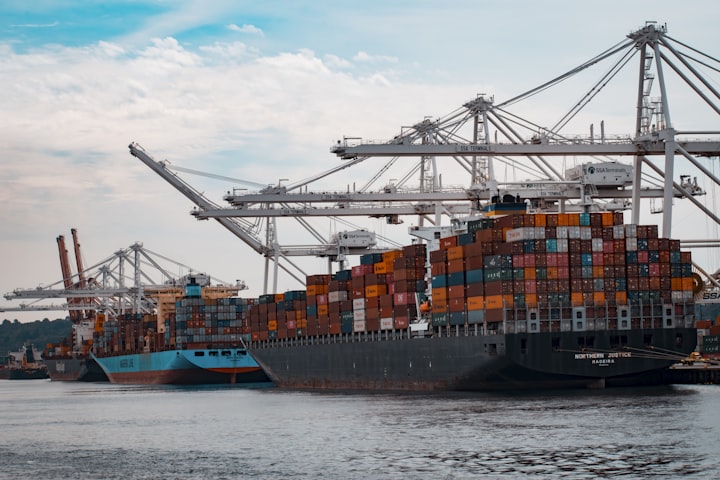Supply chain Imbalances will continue throughout 2022.
Here are the key trends to watch
The pandemic, the war in Ukraine, rising energy and food prices, supply chain disruptions and the climate crisis are challenges that threaten to destabilize decades of globalization. Just in the last five years, the world has experienced a major trade dispute between the United States and China, a global-scale pandemic caused by COVID-19, the blockage of the Suez Canal, the withdrawal of the United Kingdom from the European Union, and the war of Russia against Ukraine.
Accelerated by the ongoing conflict in Ukraine, supply chains face many challenges, which if left unaddressed will slow economic recovery and cause long-term pain. Deepening supply-demand imbalances and the different shocks in the last two years could create long term inflationary pressure. Some of this has already manifested itself. During the recent Davos meeting in May 2022, the IMF Managing Director Kristalina Georgieva estimated that this could sustain inflation in the order of 5.7% for developed nations, and 8.7% for developing economies.
If we dig deeper, food trade supply inefficiencies are hurting the poorest the hardest particularly in Africa. Chip shortages are impacting the supply of everything from smartphones, electronic gadgets, to automobiles and washing machines. Supply imbalances are projected to be with us thorough 2022, even though some positive trends are starting to show-up in China where a tougher second wave of covid restriction were imposed in early 2022. As we look at the level of business preparedness and resiliency, recent studies find that only 12% of companies are sufficiently prepared for future shocks in supply chains.
My overall take on supply chain constrains and recession risk, is that if there will be a recession, it would be a manageable one as the global economy remains strong. We are also becoming more resilient as shocks and market disruptions are becoming more frequent and overall, we are all shifting towards proactive prevention and resiliency. This is starting to prove to be cost effective and good “for business and life continuity”.
Key final points
Today’s bottlenecks have reduced global gdp by at least 1%. That is roughly 1.2 US$ trillion, which equals the annual GDP of Indonesia. Shareholders have been hit as well as consumers: as chip shortages have stalled car production, carmakers’ cashflows have dropped by 80% year on year. As I complete this short article, we still have more than 11 per cent of global container capacity stuck in ports, and stabilization of the supply chain will take at least a couple of months after the end of the lockdowns.
Here following are key takeaways and trends which are based on the perception that crisis will occur with more frequency and intensity. This is also based on the broader consideration that sustainability, conflict, pandemics, inflation, inequality, and economic shocks do not stop at borders:
1) We expect to see recurring stress geopolitically, but we are witnessing promising signs of progressive partnerships and collaboration in some key areas of the global agenda, including on climate change and the fight against COVID-19.
2) Investing in technology and data transparency combined with collaborating across networks is key to enhancing business resilience, performance, and sustainability.
3) By embedding metrics in core business processes that measure climate risk, carbon emissions, and waste and pollution, across both upstream and downstream supply chains, organizations can access a continuous view of financial, social and environmental data that manual processes simply cannot offer.
4) Sustainability is taking a back seat as society and companies navigate crisis after crisis, but investors and consumers expect companies to act on climate change and companies will act as there are huge revenue generating opportunities.
5) Supply chains will get reconfigured and reorganized. Due to geopolitical uncertainty, and climate risk, there will be more focus on multi-sourcing rather than sole sourcing. Think of the Great Flood in Thailand in late 2011, which stalled global supply chains with almost 10,000 factories affected.
6) What is new is the focus on security from food, to climate, to energy, from cyber and defense to operational resilience driving a shift away from any single source of dependency to more localization and greater redundancies. This will could add inflationary pressure to the system.
7) Around 90 percent of the world’s freight moves by ship, and, according to Becker, inundations eventually will threaten most of the world’s 2,738 coastal ports, whose wharves generally lie just a few feet to 15 feet above sea level.
8) The car industry is copying Elon Musk’s Tesla by moving towards vertical integration, in which you control everything from nickel mining to chip design.
9) The decade to 2030 is likely to prove a period of transformation for global value chains and sustainability in general.” That transformation is already under way. The pandemic has already kickstarted this process, with the European Union for example spearheading the European Chips Act in order to secure sovereignty in semiconductor technologies and applications.
About the Creator
Andrea Zanon
Andrea Zanon is an international sustainable development and empowerment specialist who has dedicated his life to reducing poverty, promoting sustainability and empowering ambitious people







Comments
There are no comments for this story
Be the first to respond and start the conversation.